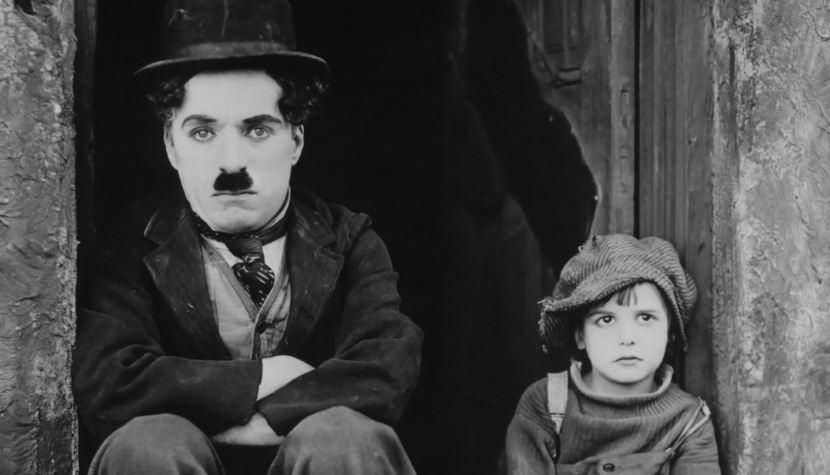THE KID. Chaplin’s groundbreaking work

The films of Charlie Chaplin, despite many being over a hundred years old, are the finest example of works that simply do not age. Time seems to have no effect on the Englishman’s filmography, and while the silent film convention that he used has long since fallen out of practice (aside from deliberate stylizations), Chaplin’s work remains far from feeling outdated. The brilliance of so many of his films is due not only to their technical mastery, creative staging, or the endearing character of the Little Tramp. In his first feature film, “The Kid” (1921), Chaplin introduced on a large scale what would soon become the hallmark of his poetic style. He made audiences cry not only from laughter but also from emotion. In fact, the genre classification itself became much less clear-cut.
Chaplin began work on “The Kid” while still under the banner of First National Pictures, even though a few months earlier, seeking full creative freedom, he had co-founded United Artists with Mary Pickford, Douglas Fairbanks Jr., and D. W. Griffith. He was unable, however, to buy out his contract, which obligated him to create six more films for his previous employer. “The Kid” was also influenced by Chaplin’s personal experiences, which were not limited to his difficult, poverty-stricken childhood. Shortly before filming began, his newborn first son, Norman Spencer, died, and Chaplin’s brief, unhappy marriage to young actress Mildred Harris negatively affected his emotional state. The result was one of the first films to clearly blend comedy with drama.

The film opens with a scene where a poor woman (Edna Purviance) leaves the hospital with her newborn. Due to her dire financial situation, she decides to abandon the child, leaving it in a wealthy family’s car. However, the car is stolen, and the thieves, upon discovering the unwanted passenger, leave the baby in an alley. There, the Tramp (Chaplin) finds the child. Though he initially doesn’t intend to get involved, he eventually takes the baby in and becomes its adoptive father. The Tramp’s social standing is even lower than that of the child’s mother, but the surrogate father does his best to ensure that both he and his ward live as decently as possible. Five years pass, and the Tramp and the now-named John (Jackie Coogan) are practically inseparable, trying to make ends meet together by working as window repairmen. The plan is simple: the kid breaks windows with stones, and his older partner conveniently strolls by with a new pane of glass on his back.
Chaplin never shied away from social commentary. His characters always live on the fringes of society, unwanted and struggling every day for a piece of bread and a roof over their heads. In “The Kid”, the Tramp and little John break the law, but their motivation is simply survival—they don’t live on the streets but cram into a tiny room, sitting on wobbly chairs and covering themselves with a tattered blanket. Chaplin also casts state institutions in a negative light. The policeman is the traditional adversary of the Tramp, but the real “villain” in “The Kid” is social welfare: brutal, aggressive, and inhumane (a telling scene shows a welfare worker speaking to the Tramp through his subordinate, as if the Tramp were beneath notice).

During his childhood, Chaplin himself had many similar life experiences. Raised by his mother, who lived in extreme poverty and couldn’t provide for either Charlie or his older half-brother, Sydney, the boys were sent to various schools for poor children. When their mother’s mental health severely deteriorated, they briefly lived with Charlie’s alcoholic father, who died soon after. Later, Chaplin spent some time on the streets until Sydney returned from the military. The issue of separating children from their parents was thus very close to him, which is reflected in “The Kid” and the relationship between the Tramp, John, and John’s mother.
A comedy addressing so many serious societal problems was not an everyday occurrence. Chaplin had to adapt the genre’s formula, based on slapstick humor, to a feature-length format. While the film is filled with gags, the narrative frame remains strongly dramatic. At times, “The Kid” features an astonishing amount of pathos, which may be the only aspect that evokes ambivalence in contemporary viewers. The charming and inventive, though slightly simplistic by today’s standards, dream sequence is a minor issue, but the early scene of Christ carrying the cross—used to draw a parallel between the biblical suffering and the mother’s plight—is somewhat excessive (fortunately, it’s only one brief shot).

However, humor, an essential element of Chaplin’s style, balances all of this. Charlie, as a master of pantomime and slapstick, is the main source of both situational and character-based comedy. This time, however, like the character he plays, he has a little helper. Five-year-old Jackie Coogan seems like a younger copy of Chaplin: just as funny, cheeky, and endearing. Having already gained some vaudeville experience, the boy perfectly complements the Tramp character while also harmonizing with the dual tone of “The Kid”. Beyond Coogan’s natural charm, the intensely dramatic sequence in which social workers take John away and the Tramp chases their car owes much of its emotional impact to the brilliant performance of this five-year-old actor. One could argue that Coogan’s role in “The Kid” is one of the best child performances in cinema history (his pleading eyes will remain unforgettable).
“The Kid” quickly became an international sensation. Both audiences and critics were enthralled, and the film was soon hailed as a masterpiece. After this enormous success and fulfilling his obligations to First National, Charlie gained complete creative independence and would soon go on to make equally, if not more, remarkable films. In 2011, “The Kid” was added to the U.S. Library of Congress’s registry and remains a groundbreaking work, one of the best in the career of this extraordinary artist.

